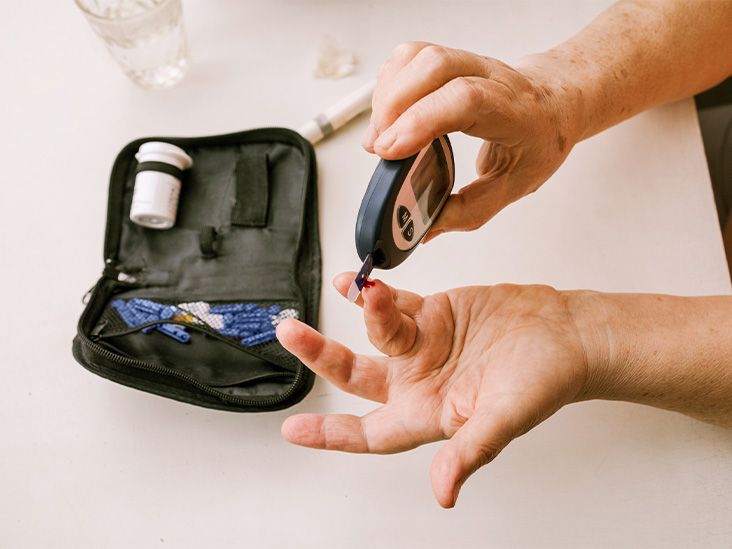Lysergic acid diethylamide, commonly known as LSD, is a hallucinogenic drug. It is illegal in most countries. LSD can affect vision, emotions, thinking, and more.
Swiss chemist Albert Hofman first synthesized the drug in
The counterculture of the 1960s promoted its use for recreational and enlightenment purposes.
Although it remains illegal in many countries, interest in LSD and other hallucinogens as potential treatments for mental illness has increased in recent years. Some advocates believe it can “reset” the brain or induce a powerful, life-changing hallucination.
Read more about LSD, its physical and mental effects, long-term effects, and more.

It is colorless and odorless. A very small amount, equivalent to two grains of salt, is sufficient to produce the drug’s effects.
People can take it orally as capsules, pills, sugar cubes, chewing gum, or liquid drops transferred to colorful blotter paper.
It activates serotonin receptors in the brain, which stimulates serotonin production in the cortex and deep structures of the brain.
These receptors help visualization and interpretation of the real world. The additional serotonin allows the brain to process more stimuli than usual.
Normally, the brain filters out irrelevant stimuli, but this does not happen with LSD. This overstimulation causes changes in thought, attention, perceptions, and emotions. Additionally, LSD reduces brain activity in several structures, including the right middle temporal gyrus, anterior cingulate cortex, cerebellum, and left superior frontal and postcentral gyrus.
These alterations appear as hallucinations. Sensations seem real, but the mind creates them.
The perceptions can involve one or more of the five senses: touch, sight, hearing, smell, and taste. Hallucinations can also cause blending of the senses, or synesthesia. People report “hearing” colors and “seeing” sounds.
People using LSD may report having good or bad “trips” or experiences.
LSD
- Visual effects: These include brightened, vivid colors, blurred vision, distorted shapes and colors of objects and faces, and halos of light.
- Changes related to touch: These include shaking, pressure, and lightheadedness.
- Mood changes: It can lead to a sense of euphoria, bliss, peacefulness, dreaminess, heightened awareness, despair, anxiety, and confusion. There may be rapid mood swings.
- Impact on thinking: It can lead to a distorted perception of time, either fast or slow, accelerated thoughts, unusual insight or terrifying thoughts, and a sense of transcendence.
Physical stimulation resulting from LSD use
Other short-term effects
However, it primarily affects the mind with visual distortions and sensory hallucinations.
LSD’s danger lies in the unpredictability of the “trip.” The drug’s potency is unreliable, and individuals react differently to it, even if they take the same dose as they did before.
An individual’s mindset, surroundings, stress level, expectations, thoughts, and mood when they take the drug strongly influence its effects.
If a person has a “good trip,” they may experience feelings of well-being, a perception of being outside one’s body, an enhanced insight toward creativity, and mystical experiences. A “bad trip,” however, can be terrifying. It is similar to psychosis, and the person cannot escape from it. There may be extreme fear, paranoia, and separation from self.
It can also trigger panic attacks, psychotic episodes, disturbing anxiety, paranoia, pain, and a feeling of dying or going insane.
Severe or life threatening physical effects are only likely to occur at very high doses — over 0.2 to 1 milligram (mg) per kilogram of body weight (mg/kg). However, the psychological effects can lead to unusual and harmful behavior.
Since individuals have no control over the purity of the drug, it is difficult to predict its effect on the body and the mind.
LSD
This is the need to increase the dosage to achieve the response a person once got with a lower dose. Over time, this tolerance increases the risk of overdose. It can also lead to psychological dependency.
Because LSD does not cause physical dependence, withdrawal symptoms do not occur when a person stops using it. However, LSD can trigger long-term psychosis or schizophrenia in
Flashbacks, also known as hallucinogen persisting perception disorder (HPPD), and severe disorientation can happen after only one dose. Researchers do not know what causes this phenomenon.
There is no surefire way for an untrained person to recognize LSD without drug testing. It is colorless and odorless, and because it is very potent, LSD doses are quite small.
LSD often comes on blotter paper, divided into small squares, with each square representing a dose. Some people also sell it in saturated sugar cubes or a liquid form.
Researchers
The Food and Drug Administration (FDA) has not approved LSD for any medical use, but researchers can use the drug in limited controlled settings.
The production and sale of LSD are illegal in many countries, but some researchers
For example,
LSD is a powerful hallucinogenic drug. The FDA has not approved it for any medical uses, but advocates and some researchers suggest it could improve mental health treatment outcomes in some people.
Ongoing research may determine when, whether, and how LSD may benefit health. Without more research, LSD remains an illegal recreational drug. Although it does not typically cause physical withdrawal symptoms, it can cause some psychological issues.


